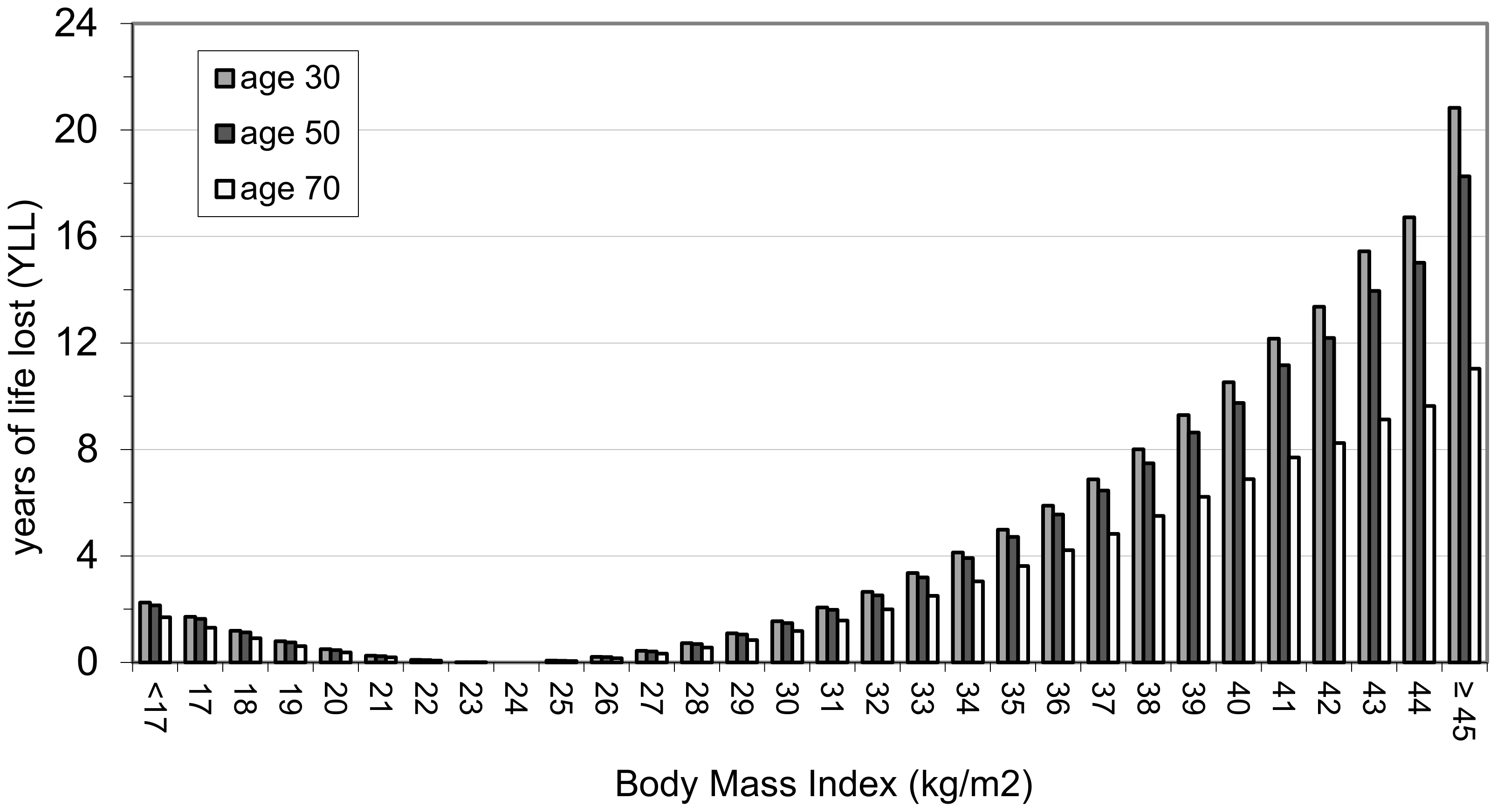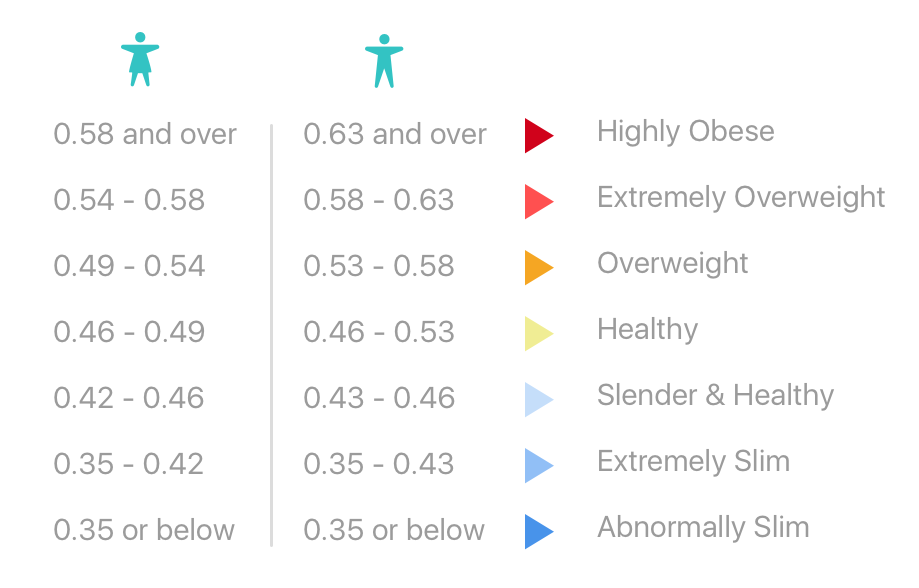Waist Circumference Predicts Insulin Resistance
+ overall morbidity and mortality

In a paper just published in PLOS ONE, in 2017, physiologists at Leeds Beckett University in the United Kingdom have confirmed that there’s a better way to predict body and abdominal fat: the waist-height ratio (WHtR), determined by dividing your waist by your height.
They reached this conclusion after measuring actual body fat and composition in 81 people using a highly precise total body scanner, then comparing the results with those of various anthropometrics commonly used to predict body fat and obesity, including BMI, WHtR, waist-to-height ratio 0.5, waist circumference, and waist-to-hip ratio.
The study, led by Michelle Swainson, a professor of exercise physiology, found the cutoff for predicting whole body obesity was 0.53 in men and 0.54 in women using the WHtR ratio; while a ratio of 0.59 and above indicated abdominal obesity in both genders. See Measurement Guidelines below
According to Dr Ted Naiman, the cause of obesity is not complicated.
The exact cause is the refinement of carbs and fats, creating dietary energy that has been separated from satiety. This worsens when we combine high energy density refined carbs and fats together, creating negative satiety.
You can blame your insulin resistance on obesity, but you can’t blame your obesity on insulin resistance. In fact, it is much easier to store fat when you are Insulin Sensitive, and more difficult to store fat when you are insulin resistant.
Mortality rates and obesity
The graph below shows the 20 year all-cause mortality rate by deciles (tenths) based on BMI and WHtR for males and females. The mortality rate is the number of deaths in a decile of BMI (or WHtR) divided by the number of people originally in that decile, expressed as a percentage.

The best tests for insulin resistance
The three best tests for determining your personal level of insulin resistance include:
- Fasting Insulin Levels (don't confuse this with fasting glucose). Although the average USA adult has a level of 8.8, everyone needs to be under 5. Optimum health is a 2 or 3.
- Waist-to-Height Ratio. Excellent, simple and free measurement. Divide your waist measurement by your height measurement, and cross your fingers that the number is 0.5 or less. That is, your waist needs to be half of your height.
- Triglycerides to HDL ratio. The more insulin sensitivity the lower the triglycerides and the higher the HDL.
Test scores that suggest you are sensitive to Insulin:
Hemoglobin A1c - 5.5 or less
Fasting Insulin - 4 or less
Triglycerides - 70 or less
Blood pressure - 120/80 or less
HDL - 65 or more
Primer on insulin resistance
- Overfilled adipocytes cause insulin resistance, as it takes more and more insulin to deal with mealtime fat flux and hold fat in adipocytes.
- All dietary fat is stored in adipocytes and only burned if and when glucose is absent.
- Hunger and carbohydrate availability prevents fat oxidation in those who are not proficient at meeting metabolic needs with stored fat.
- Glucose and fat are oxidized reciprocally in mitochondria
- The intracellular availability of glucose, not fatty acids, is the prime determinant of the substrate mix (i.e., glucose vs. fat) that is oxidized for energy.
Waist-to-height Ratio
Waist circumference is an excellent proxy for overfilled adipocytes, and waist-to-height ratio predicts insulin resistance, as well as a predictor of overall morbidity and mortality. The test can predict your risk for developing diseases linked to excessive insulin, like type 2 diabetes and heart disease.

Waist Circumference Measurement Guidelines
Step 1
- Stand in front of a mirror
- Ensure your abdomen is unrestricted and clear
- Feet shoulder-width apart
Step 2
- Wrap the measuring tape around your waist and insert the end of the tape into the appropriate slot.
- Locate the uppermost border of your hipbones (iliac crest) on your right-hand side.
Step 3
- Align the bottom edge of the measuring tape with the top of your hipbones.
Step 4
- With the help of a mirror, ensure that the tape is placed horizontally and wraps all-around your abdomen.
Step 5
- Before taking the measurement, take 2-3 normal breaths.
- At the end of the 3rd expiration, make a final adjustment by gently tightening the tape around your abdomen using the tape's central button.
Step 6
- Take the measurement at the end of a normal expiration.
- Before removing the tape, pinch the end of the measuring tape
with your fingers closest to your measurement and hold it in position. - Note the result. Test here

Thank you for reading this post! If you found it helpful or informative, please consider sharing a 7 day free trial with your friends, family, or colleagues who might benefit from it.
Your support helps me reach more people and spread awareness on important topics like this. Together, we can make a difference!




